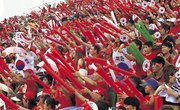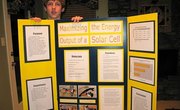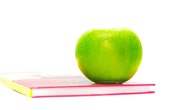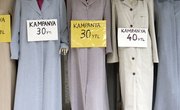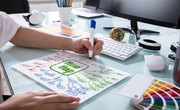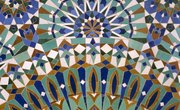Tri-fold presentation display boards are some of the most effective and interesting ways to summarize or complement a presentation or unit study. Science fairs, model United Nations competitions, unit studies on subjects from history to international topics, and organizational advertising at missions/career/college fairs are just a few of the endless uses for tri-fold displays.
Tri-fold boards only capture about 15 to 20 seconds of a viewer’s attention. Since more than 15 seconds’ worth of time is invested in the board’s creation, make that investment count!. Displays should emphasis bright colors, minimal text and only the most relevant and unique information.
Know Your Audience
Toward whom is this information directed? Cater to your group’s prior knowledge and cultural/age tendencies. For example, don’t include basic background knowledge about a higher-level topic addressing experts in that field. Include basics if necessary, but try to include revolutionary and/or unique information in your presentation.
Headers and Titles
Grab audience attention. The title of the display should be pithy, captivating and easy-to-read. Be creative and imaginative. Alliterated and short titles are often the catchiest. Use a bold, basic font and dark coloring. You may consider using Microsoft Word fonts or stenciling by hand.
Pictures
Because the purpose of the display board is to enhance visualization of concepts or ideas, diagrams, photographs and other illustrations are the most important part of the presentation. They should be tastefully chosen and accurately captioned. It can be fun to glue pictures to construction paper “frames” to enhance eye capturing and make the pictures more durable.
Text and Content
Text should be summarized as briefly as possible. Bullet points, large bold font and easy-to-understand vocabulary are musts. The purpose of text on a display board is to clearly explain that which cannot be explained as clearly through visual aids.
Interactive Components: Think Outside the Board
One of the coolest opportunities a display board gives is the chance to display 3-D or other hands-on objects on the table in front of the board, such as a Mahjohng game board for a display regarding “games around the world,” or a Popsicle stick log cabin for a display on American pioneers. Science displays lend themselves well to this. Cultural foods, science experiments, and other novelties and craft projects can also be shared to complement the visuals on the board.
Have fun, be creative and think outside the board.
Related Articles
Writer Bio
Rebecca High graduated from Cedarville University, with a B.A. in international studies. As a university student she wrote and edited for "Cedars," the campus newspaper, and was published twice in the "Kamelian," the literary journal of Kishwaukee Community College. She attended the World Journalism Institute convergence course 2009 taught by journalists including Pulitzer Prize-winning Manny Garcia. She has written reviews for Sazze.com


